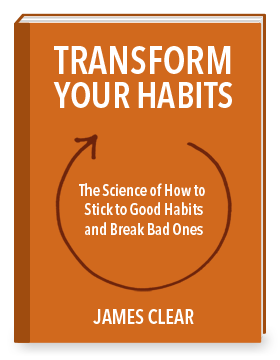By Katie & Gay Hendricks
The Secret To Lifelong Happiness And Love
I consider “IF ONLY” to be two very dangerous words.
They’re dangerous because they actually distract us from the real cause of our unhappiness.
“IF ONLY” has us looking for answers outside ourselves, forever trying to change how others behave in order to feel better about our own lives.
We believe that our relationships, work and health could be better, if only this person acted a certain way, or if only there weren’t so many obstacles in the way.
It turns us away from the one thing that CAN change how we feel about our lives.
And that is looking within, to how we really feel about ourselves.
Because in order to feel at peace and fully content with our lives, we must first and foremost learn to love ourselves.
But here’s the tricky part:
Most of us don’t even realize that we don’t love ourselves.
Subscribe to Our Expert Newsletter
- One word that stops a fight in its tracks
- How we accidentally push love away, even when we are trying to get closer
- Why your relationships keep failing… and problems keep repeating
We think “if only” we could make a little more money, we could afford the things that would make us really happy… like remodeling our kitchen, buying a better car or booking a vacation to Hawaii.
If only we could get some cooperation around the house from our partner or kids, we could finally relax and do something nice for ourselves instead of wearing ourselves out keeping things tidy and functioning.
If only we didn’t work such long hours or have such a long commute, we would have the energy to go to the gym and eat better, and take better care of our health.
But the truth is none of those “if only’s” will make us feel happy at all.
Even if we got everything we wanted, there would be something else that would eat away at our contentment, because the “if only’s” are only SYMPTOMS of the real problem.
2 Signs That You Don’t Really Love Yourself
The real problem, and why so many of us feel chronically unhappy with our life, is that we don’t love ourselves.
In order to feel at peace and fully content with our lives, we must first and foremost learn to love ourselves.
And for most of us, it’s hard to know whether or not we truly love and accept ourselves, or if we just think we do.
These two are particularly insidious, because they lie beneath that chronic sense of discontent that can last decades – a lifetime, even. See if you can relate:
SIGN #1: You run yourself ragged trying to be everything to everyone
Your boss sends you a last minute request, and you always do them right away, even when it means missing dinner dates, time with your kids or workouts with friends at the gym.
You offer to watch your neighbor’s dog while he’s on vacation, even though you barely have time to walk and play with your own dog.
You say “yes” even when you don’t have the time, energy or desire, because you don’t want to disappoint the people that count on you.
You think your problem is that you’re not organized enough, that you don’t set good enough boundaries or that there’s just not enough time in the day to do everything you want to do.
Actually the problem isn’t that at all.
The problem is that you don’t love yourself, so you’re always trying to prove something to someone – that you’re a good partner, a good parent or a good employee. Unless you learn to love yourself, you’ll forever run yourself ragged and never feel accomplished.
SIGN #2: You never feel like you’re “enough”
No matter what you do for others, you don’t feel like you’re enough, meaning, you don’t ever feel that people truly love or respect you. Nothing you do is ever enough to make others (or yourself) satisfied for long.
If you’re single, this shows up in that sinking feeling you get whenever your partner is acting distant or you worry over whether or not they’ll call you again. They may have told you they had a nice time on the date, but you won’t believe them. You’re convinced that other people have great relationships, but that you never will.
If you’re in a relationship, it could mean that you seethe with jealousy whenever your partner talks about another person or pays attention to anyone else. You fear being abandoned and you worry about them breaking up with you. You can’t handle criticism and feel like your partner is constantly on your back about something.
At work it means not feeling appreciated or respected for your contribution. At home it can be second–guessing how you treated your kids. Did you say the right thing? Is someone going to think you’re a bad parent?
It could show up as never being happy with how you look or feel and therefore giving up on the habits that can really make a difference in your health.
You may think all these problems are the results of choosing the wrong partner, or having an inconsiderate boss or out–of–control kids. But actually these are all symptoms of a greater problem – that you don’t love yourself.
And it can lead to strained or broken relationships, career setbacks and a whole host of health issues.
Not loving yourself is a symptom of so many personal problems, but there is one solution that can turn everything around.
Learning to Love Yourself Is a Simple Process With a Lifetime of Rewards
You can solve a lot of the problems you’re experiencing in life if you just learn to love yourself.
You don’t have to run yourself ragged anymore. You don’t have to feel inadequate in any area of life, or wonder if you’ll ever be loved the way you deserve.
You just need to learn how to tap into who you really are, and then accept yourself fully.

After over four decades counseling couples, singles, CEOs, celebrities and everything in between, I can say without a shadow of a doubt that plague of self-hatred affects us all.
It affected me too, until I learned the secret to true self-love and acceptance, and completely transformed my life.
I can teach you the secret too, along with other critical skills that are needed to live a fully realized life, with a wonderful partner, and contributing your best potential to the world.
My free newsletter, Hearts In Harmony, will teach you how to be at harmony with yourself, with your loved ones and the world.
I’ve partnered with my life partner, Katie Hendricks, to give you the transformative tools you need to radically change your life.
We’ll teach you all the proven advice, body intelligence, beliefs and commitments to allow you to fully open yourself up to the miracle of love, and the secret to making it last… forever.
You’ll also learn:
- The enemies of love and connection, and the secrets to creating genuine love that only grows better and better over time
- The single biggest catalyst for transformation in life and love, along with a series of tools to help make that change permanent
- How to attract authentic love into your life, and find the partner that is truly compatible with you
- How to end (or prevent) the fighting, loneliness and heartbreak in your relationship
When you learn to love yourself, all your relationships can be transformed. You’ll no longer run yourself ragged, trying to please everyone and never feeling like you’re enough at the end of the day.
Relationships will energize you instead of draining you. You’ll feel self-assured, relaxed and free, at last.
 Take time to smell Roses.
Take time to smell Roses. …)
…)







